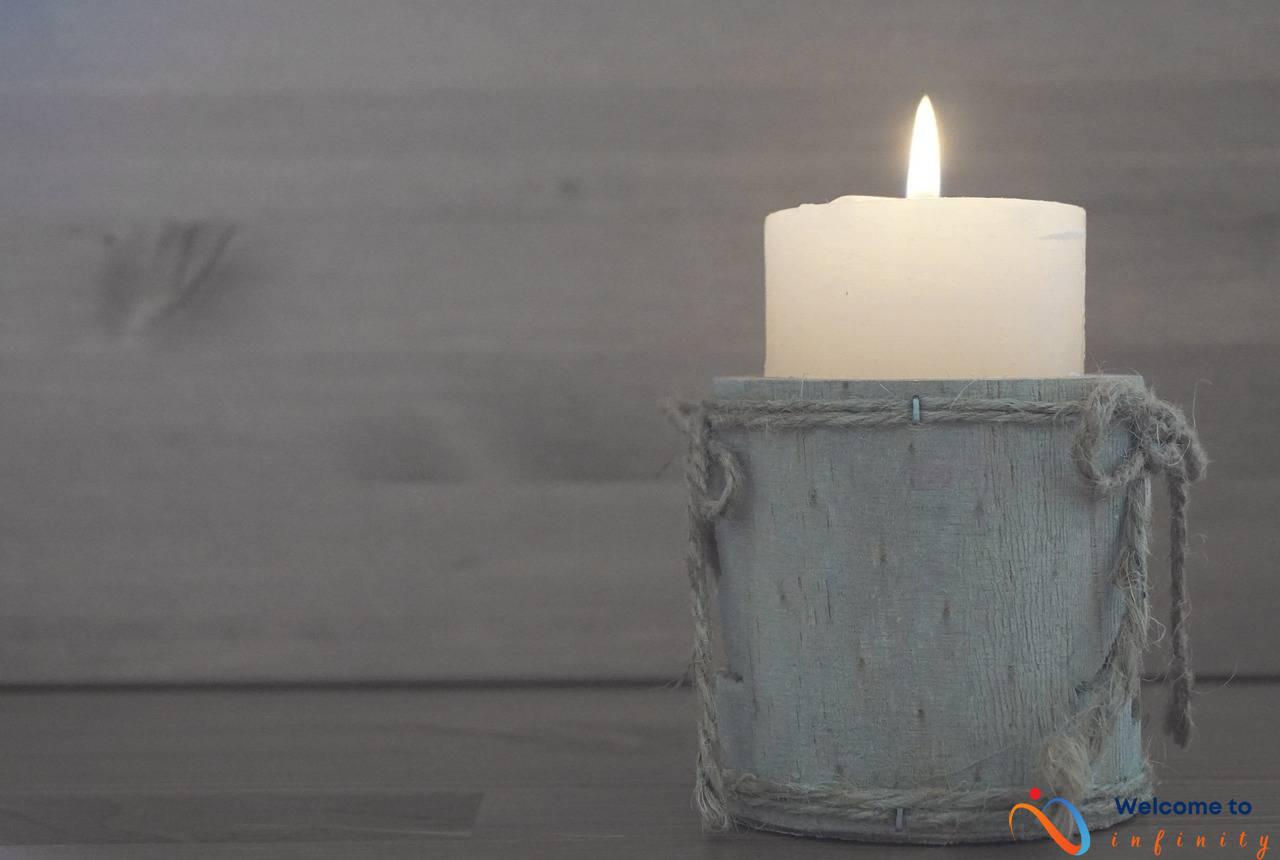As the seasons change, so does our wardrobe. But what do you do with all of your off-season clothes? It's important to store them properly to prevent damage or loss, and to save space in your closet for your everyday clothes. Here are some tips on how to store your seasonal clothes:
- Purge and Organize: Before storing your seasonal clothes, go through them and get rid of anything you no longer need. Then, organize them by category so you can easily find them later.
- Choose the Right Storage Containers: Using the right containers can make all the difference. Look for ones that are sturdy, sealable, and can protect your clothes from moisture and pests.
- Select the Right Location: Storing your clothes in the right location can prevent damage and keep them in good condition. Look for a cool, dry place that's away from direct sunlight, like a closet or under the bed.
- Label and Track: Once you've stored your clothes, make sure to label the containers or bags, and keep track of what you have stored and when it's time to bring them out again.
To start, begin by purging and organizing your seasonal clothes. This is a great time to get rid of anything you no longer need, and to organize your clothes by category. You can separate them by type (shirts, pants, etc.), by occasion (casual, formal, etc.), or by color. Whatever method you choose, make sure it works for you and that you'll be able to find your clothes easily when you need them.
Once you've organized your clothes, it's important to choose the right storage containers. Look for containers that are sturdy and sealable to keep out dust and pests. Plastic containers are a popular choice, as they are affordable and readily available. Look for ones that are stackable and have airtight lids to prevent dust and moisture. Vacuum-sealed bags are also great for maximizing space, but they're not ideal for delicate fabrics or clothes that need to breathe.
Next, consider selecting the right location to store your clothes. The best location is a cool, dry place that's away from direct sunlight, like a closet or under the bed. Closed storage spaces like closets or dressers are ideal for storing your seasonal clothes, as they can be closed to prevent dust and moisture. If you're short on closet space, consider under-bed storage containers that are specifically designed for this purpose.
Finally, once you've stored your clothes, make sure to label the containers or bags and keep track of what you've stored and when it's time to bring them out again. Label each container or bag with the season and type(s) of clothes inside. This will save you time and prevent you from having to search through multiple containers later. Create a list or map of what's stored where to keep track of your clothes. You can also set reminders to swap out your clothes at the beginning and end of each season.
By following these simple tips, you can store your seasonal clothes properly and save space in your everyday wardrobe.
Purging and Organizing
Before you store your seasonal clothes, take time to purge and organize your wardrobe. Start by going through each item and getting rid of anything you no longer wear or need. This will make it easier to store only the items that you will actually use next season and free up space in your closet or storage area.
To further maximize space, organize your clothes by category, such as t-shirts, pants, sweaters, and jackets. This will make it easier to find specific items when the time comes to switch out your wardrobe. For instance, you can place all your summer shirts in one container and all your winter sweaters in another container, or keep them separate in your closet or dresser drawers. Consider investing in quality hangers or storage bins to protect and preserve your clothes.
Additionally, when you organize your clothes by category, it can become easier to create a capsule wardrobe for each season. A capsule wardrobe is a collection of essential clothing items that can be mixed and matched to create various outfits. By only keeping what you truly need and organizing your clothes by category, you'll be more likely to create a versatile and functional wardrobe with fewer items.
- Start by evaluating each item and determining if you still need it
- Organize your clothes by category, such as t-shirts, pants, sweaters, and jackets
- Invest in quality hangers or storage bins to protect and preserve your clothes
- Create a capsule wardrobe for each season
Choosing the Right Storage Containers
If you want to store your seasonal clothes properly, choosing the right containers is essential. Not only does it help save space, but it also ensures that your clothes are protected from moisture and pests. Here are some factors to keep in mind:
- Sturdiness: The containers should be durable enough to withstand weight and pressure as they may be stacked on top of each other or moved around.
- Sealability: Look for containers with airtight lids to prevent dust and moisture from seeping in. This is particularly important if you plan on storing your clothes in an area with high humidity.
- Moisture and pest protection: Choose containers that can keep pests and mildew out. Moisture and pests can damage your clothes, so make sure the containers you choose have an extra layer of protection against these elements.
While choosing a storage container, you'll come across a variety of options. Here are two popular options:
Plastic containers are a budget-friendly option and readily available in most stores. They come in various sizes and shapes. They are stackable, making them easy to store, and have airtight lids, which make them great for protecting clothes from dust and moisture. Also, they are durable and long-lasting.
Another option for storing seasonal clothes in a space-saving and compact way is vacuum-sealed bags. These bags compress your clothes to a fraction of their original size, making it easier to store them in tight spaces. However, these bags may not be the best choice for delicate fabrics as they can damage them. Additionally, clothes need to breathe, and vacuum-sealed bags, when sealed, can cause issues with ventilation.
Choosing the right storage containers ensures that your seasonal clothes are in good condition and ready to wear when the season comes back around. With the right type, you can store your clothes without worrying about damage or storage issues.
Plastic Containers
Are you looking for an affordable and easy way to store your seasonal clothes? Plastic containers are a popular choice that can provide great protection against dust, moisture, and pests. When choosing the right plastic containers, make sure to look for ones that are stackable and have airtight lids to ensure your clothes stay safe and secure.
Not all plastic containers are created equal. Some may be too small or flimsy, which can lead to clothes getting squished or damaged. It's important to choose containers that are the right size for your clothes and durable enough to withstand being moved around and stacked on top of each other.
You can also consider using clear plastic containers to easily identify what's inside without having to open each one. This can save you time and energy when it's time to retrieve your seasonal clothes.
- Look for containers that have a secure lid
- Choose the right size for your clothes
- Consider clear containers for easy identification
Plastic containers are a great option for those who want a quick and easy solution for storing their off-season clothes. Just make sure to choose the right containers that are durable, stackable, and have airtight lids to keep your clothes safe and secure.
Vacuum-Sealed Bags
Vacuum-sealed bags have become a popular choice among people who want to save space while storing their clothes. These bags work by removing the air from the bag and compressing the clothes down to a fraction of their size. This allows you to store a lot more clothes in a small space. Vacuum-sealed bags are perfect for bulky items such as winter coats and sweaters.
However, it's important to note that vacuum-sealed bags are not ideal for delicate fabrics or clothes that need to breathe. The air-tight seal can trap moisture inside the bag, which can cause mold and mildew to grow on your clothes. This can lead to discoloration, odors, and even damage to the fabric.
- If you plan on using vacuum-sealed bags, make sure to only store items that are not delicate or easily damaged.
- Leave some space in the bag for items to breathe and avoid overloading the bag.
- To prevent moisture buildup, consider adding a moisture absorber such as silica gel packets to the bag.
Vacuum-sealed bags can be a great solution for those with limited space. However, it's important to use them wisely and only for certain types of clothes.
Selecting the Right Location
Properly storing your seasonal clothes is key to preserving their longevity and ensuring they are ready for use when you need them again. The right location can prevent damage and keep your clothes in good condition, so it's important to choose wisely.
Firstly, it's best to look for a cool, dry place away from direct sunlight. Sunlight can cause discoloration and damage to fabrics over time, so it should be avoided. A closet or an under-the-bed storage container are both good options for storing your clothes.
Closets are ideal because they protect your clothes from dust, moisture, and pests, while also being easily accessible. When storing clothes in a closet, make sure it is clean and dry to prevent the buildup of mold and mildew. For added protection, consider using a breathable garment bag or a plastic container with ventilation holes.
If you're short on closet space, under-the-bed storage containers are a great alternative. These allow you to store your clothes out of sight while also keeping them organized and protected. Look for containers that are specifically designed for under-the-bed storage, as these will fit perfectly and allow you to maximize the space.
When choosing a storage location for your seasonal clothes, it's important to avoid areas that are prone to fluctuating temperatures and humidity levels. Attics, basements, and garages are generally not recommended, as they can cause damage to your clothes due to extreme temperatures, humidity, and pests.
By properly selecting the right location for your seasonal clothes, you can ensure that they stay in great condition and are ready for use when you need them again. Remember to avoid direct sunlight and fluctuating temperature and humidity levels, and choose a cool, dry place that is easily accessible.
Closed Storage Spaces
If you have a closet or dresser that can be closed, these are ideal for storing your seasonal clothes. A closed storage space can protect your clothes from dust, moisture, and pests. Before storing your clothes, make sure to clean out your closet or dresser and air it out. This will help prevent any musty or unpleasant smells from getting onto your clothes.
When organizing your clothes in a closed storage space, group them by category, such as shirts, pants, and dresses. This will make it easier to find what you need later on. It's also a good idea to use hangers to keep your clothes wrinkle-free and prevent them from getting crushed.
If you're storing your clothes in a drawer, use dividers to keep them separated and organized. You can also use drawer liners to protect your clothes from any rough or sharp edges in the drawer.
If you're using a closet, consider using hanging organizers or shelves to make the most of the space. You can use hanging organizers to store shoes, purses, or accessories. Shelves can be used to store sweaters, jeans, and other folded items.
Lastly, make sure to close the doors or drawers tightly to prevent any dust or pests from getting in. By properly storing your clothes in a closed space, you can ensure that they are well-protected and in good condition for the next season.
Under-Bed Storage
If you're running out of closet space, don't worry, you're not alone. Under-bed storage is an excellent option for storing your off-season clothes. You can purchase under-bed storage containers that are specifically designed for this purpose, or you can simply use plastic containers that fit under your bed.
When choosing under-bed storage containers, look for ones that are shallow so you can easily slide them in and out from under your bed. You may also want to consider using containers with wheels to make moving them around easier.
Don't forget to label your under-bed storage containers so you can easily identify what's inside. You can also group your clothes by season or category to make it even easier to find what you need.
Under-bed storage is also a great option for bulky items like comforters and blankets. Just be sure to fold them neatly and place them in a sealed container to protect them from dust and pests.
If you don't have under-bed space, consider raising your bed by using bed risers. This way, you can create more space for storage, and it's also a great way to create extra space in a small bedroom.
Remember, under-bed storage is best for items that you won't need to access frequently. If you know you'll be using certain items regularly, keep them in a more accessible location like a closet or a dresser.
Labeling and Tracking
Proper labeling and tracking of your seasonal clothes can save you a lot of time and effort in the long run. Once you've stored your clothes in the appropriate containers, make sure to label them so you can easily find them next season.
You can create labels using stickers, tags, or even a permanent marker. Be sure to include the season and type of clothes inside each container or bag. This will come in handy when it's time to switch out your wardrobe and you can easily identify which containers to grab.
To further streamline the process, create a list or map of what's stored where. This way, you can keep track of your clothes and avoid having to rummage through multiple containers. You can even set reminders on your phone or calendar to remind you when it's time to bring out your seasonal clothes again.
- Label each container or bag with the season and type(s) of clothes inside.
- Create a list or map of what's stored where to keep track of your clothes.
- Set reminders to swap out your clothes at the beginning and end of each season.
Proper labeling and tracking may seem like a small detail, but it can make a big difference in how you store and manage your seasonal clothes. By following these simple steps, you'll be able to find what you need quickly and efficiently, making the transition from one season to the next a breeze.
Labeling
One of the most important steps in storing your seasonal clothes is labeling each container or bag with the season and type(s) of clothes inside. This may seem like a small detail, but it will save you time and prevent you from having to search through multiple containers later.
You can use labels, markers, or even color-coding to make it easier to identify what you've stored. For example, you could use blue labels for winter clothes and red labels for summer clothes. Be sure to include the type of clothes stored, such as “sweaters” or “shorts”.
If you're using clear plastic containers, you can create a list of the contents and tape it to the outside of the container. This way, you can quickly see what's inside without having to open each container.
Another option is to create an inventory list of what you have stored and where. This can be helpful if you have a lot of containers or if you store your clothes off-site. You can create a simple spreadsheet or use a mobile app to keep track of your clothes.
Overall, labeling your seasonal clothes is a simple but effective way to stay organized and save time when it's time to switch out your wardrobe.
Tracking
=It's important to keep track of what's stored where to prevent losing or forgetting about your off-season clothes. One way to do this is by creating a list or map of all the containers or bags you used to store your clothes. You can even take pictures of the contents of each container and label them accordingly. This will save you time and effort when it's time to switch out your wardrobe every season.
Another way to keep track of your stored clothes is by setting reminders on your phone or calendar. This will ensure that you don't forget to swap out your clothes at the beginning and end of each season. You can also make a note of any pieces that need to be repaired or replaced before the next season rolls around.
It's also a good idea to keep an inventory of your off-season wardrobe so you know what pieces you already have and what you may need to purchase in the future. This can be done through a simple spreadsheet or even a handwritten list. By doing this, you will be better prepared for each season and avoid duplicating purchases or forgetting essential pieces.












